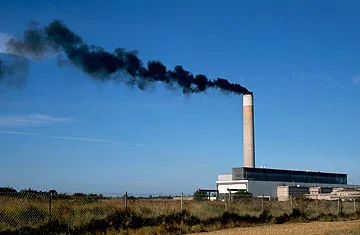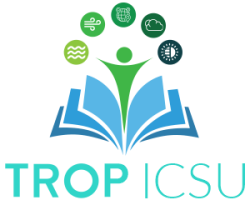The Greenhouse Effect

The Greenhouse Effect Overview Overview As a Middle School or High School Environmental Sciences teacher, you can use this lesson plan to teach about the Greenhouse Effect of the Earth’s atmosphere. This lesson plan will explain what are Greenhouse Gases (GHGs), what is the Global Warming Potential (GWP) of atmospheric Greenhouse Gases, and how increased […]
Climate Solutions for Health and Education Sector

Climate Solutions for Health and Education Sector Reading A short reading from ‘Project Drawdown’ that discusses climate solutions for the Health and Education Sector. It explains how the connection between climate and social systems can offer profound insights into climate solutions. It also explains the importance of social factors such as family planning, population control, […]
Climate Solutions by Project Drawdown

Climate Solutions by Project Drawdown Reading A website resource designed and developed by ‘Project Drawdown’ that offers a sector-wise list of solutions to the climate crisis. It includes readings on specific solutions for various sectors and sub-sectors such as: Electricity: This reading summarises climate solutions for the electricity sector. It explains different technologies that generate […]
The Impact of Human Activities on the Natural Carbon Cycle

The Impact of Human Activities on the Natural Carbon Cycle Classroom/Laboratory Activity A classroom/laboratory activity to understand the carbon cycle, and to explore how human activities may affect the natural carbon cycle. Students will run a simulation to explore how an increase in fossil fuel use will affect the natural carbon cycle, and will discuss […]
The Changing of pH of Ocean Water and Its Impact on Marine Life

The Changing of pH of Ocean Water and Its Impact on Marine Life visualization A visualisation to learn about the pH scale, the pH of different liquids, ocean acidification, and the possible impacts of ocean acidification on marine life. Students will identify the pH of different liquids and observe how the average pH of ocean […]
Ocean Chemistry, Ocean Acidification, and Oyster Growth

Ocean Chemistry, Ocean Acidification, and Oyster Growth Classroom/Laboratory Activity A classroom/laboratory activity to learn about the pH of ocean water, explore the potential effects of climate change on ocean acidification, and understand the possible impacts of ocean acidification on marine organisms such as oysters. Students will explore and analyze the relationship between the growth of […]
Climate Solutions for Industry Sector

Climate Solutions for Industry Sector Reading A short reading from ‘Project Drawdown’ that discusses climate solutions for the Industry Sector. It lists different solutions by the industry sector towards addressing the climate crisis such as: – Reduce the use of plastics, metals and cement and employ alternative materials in industrial processes – Move towards a […]
Reconstruction of Paleoclimate by Using Isotopic Composition Data

Reconstruction of Paleoclimate by Using Isotopic Composition Data Classroom/Laboratory Activity A classroom/laboratory activity to learn about the isotopes of hydrogen and oxygen, analyze the isotopic composition of ice, and understand how isotopic compositions can be used to recreate past temperatures and climate. Students will plot graphs to analyze data from the Vostok ice core in […]
Modes of Vibration in Greenhouse Gas Molecules

Modes of Vibration in Greenhouse Gas Molecules Video A micro-lecture that describes the vibrational modes of polyatomic molecules, how these modes determine whether the molecules are IR inactive or IR active and explains why most IR active polyatomic gas molecules are greenhouse gases. Students will learn about the various modes of vibration in polyatomic gas […]
Climate Solutions for Electricity Sector

Climate Solutions for Electricity Sector Reading A short reading from ‘Project Drawdown’ that discusses climate solutions for the Electricity Sector. It lists different solutions by the electricity sector towards addressing the climate crisis such as: -Enhance efficiency by introducing new technologies and practices that reduce electricity demand – Shift production towards renewables and reduce dependency […]


